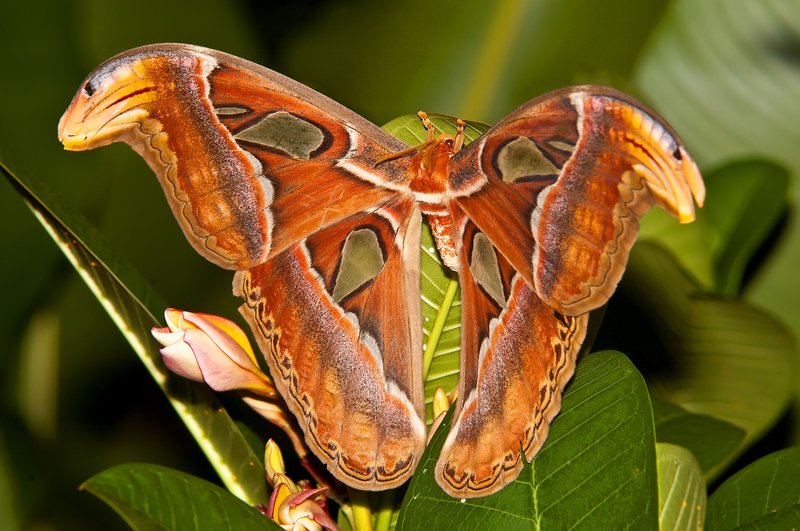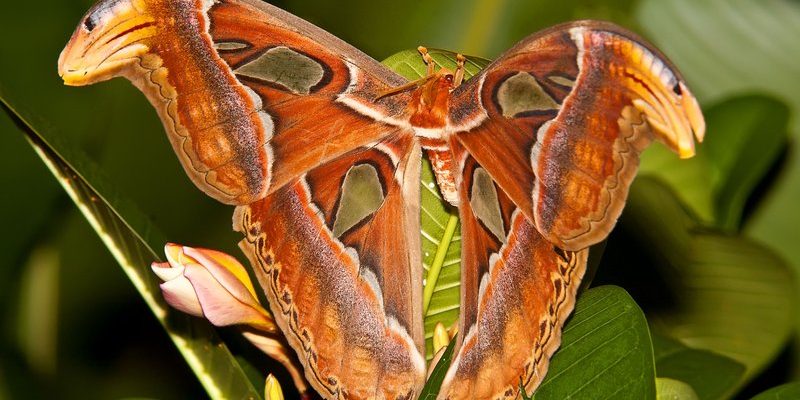
You might be wondering how these magnificent insects, with their impressive wingspans of up to 12 inches, manage to express themselves. Well, communication in the insect kingdom is both intricate and essential. Whether they’re fluttering in the breeze or resting on a branch, Atlas moths have developed a variety of methods to interact with each other and their environment. So grab a cup of coffee, and let’s dive into the captivating world of Atlas moths and their communication dance.
Visual Signals: Wing Displays
One of the most striking features of Atlas moths is their enormous wings, which they use as a canvas for communication. When Atlas moths want to signal to each other, they can display their wings in impressive ways. The patterns and colors on their wings aren’t just for show—they play a crucial role in their courtship rituals.
For instance, male Atlas moths often engage in a display called “fanning.” This involves spreading their wings wide and moving them slowly. This movement showcases their bold patterns and colors to potential female partners. It’s kind of like a peacock showing off its feathers! The bright colors can attract females, who are looking for a healthy mate. They might even respond with their own subtle movements, creating a beautiful visual conversation.
Chemical Communication: Pheromones
In addition to visual signals, Atlas moths also communicate through chemical cues. Yes, you read that right—these moths use scents! When females are ready to mate, they release specific pheromones, which are chemical substances that attract males. Imagine a perfume that only certain moths can smell; it’s like a beacon calling out to potential partners.
Once a female releases her pheromones, the males can detect them from quite a distance. This chemical communication is essential for mating, especially since Atlas moths are nocturnal and may not see each other clearly at night. So, you could think of it as their very own dating app, where scent is the primary profile picture!
Sound Communication: Subtle Noises
Though they’re not known for being noisy, Atlas moths can produce subtle sounds during certain interactions. While most of their communication relies on visual and chemical signals, they can create soft, rustling noises with their wings. You might not hear it in a bustling environment, but to other moths, these sounds can signal a variety of things—from mating readiness to warnings about nearby predators.
Think of it like whispering in a crowded room; you need to be close enough for someone to catch your words without drawing too much attention. This form of communication is particularly effective in their natural habitats, where sound carries differently at night. By rustling their wings at just the right moments, Atlas moths can communicate effectively without alerting any potential threats.
Interactions with Their Environment
Atlas moths also interact with their environment in ways that support their survival. For instance, their wings are not only beautiful, but they also help them blend in with their surroundings. This ability to camouflage can be seen as a form of communication with predators: “I’m not here!”
When resting on tree bark or leaves, Atlas moths can fold their wings in a way that mimics the textures and colors of their backdrop. This stealthy form of communication helps them avoid detection. If you think about it, it’s like wearing a cloak of invisibility. By merging with their environment, they send a clear message to any prying eyes: “Don’t mess with me!”
Seasonal and Environmental Influences
Believe it or not, the way Atlas moths communicate can change based on the seasons or environmental conditions. During the mating season, for example, males might engage in more vigorous wing displays to compete with other males. This shift in behavior ensures that they stand out more to potential mates.
When environmental conditions are harsh, such as during dry spells, their communication might become more subtle as they conserve energy. It’s similar to how people might speak more softly or limit their activities during a heatwave. Understanding these seasonal influences helps researchers learn more about how these creatures adapt to their surroundings.
Social Interactions: Mating and Rivalry
Let’s talk about the social dynamics of Atlas moths. When it comes to mating, there’s often a bit of competition among males. They might engage in aerial displays, showcasing both size and agility to catch the attention of a female. This kind of behavior is not just about attracting a mate but about establishing dominance among competitors.
You might visualize this as a friendly, albeit intense, sports match. Males will perform acrobatic maneuvers and displays while trying to outshine their rivals. These interactions create a social structure within the moth community, which is rich and complex.
Human Impact on Communication
Finally, let’s consider how human activity is changing how Atlas moths communicate. As urban areas expand and natural habitats are threatened, the signals these moths rely on can be compromised. For example, light pollution can disrupt their mating cues, as artificial lights can interfere with the moths’ natural rhythms.
It’s like turning the volume up on a conversation; suddenly, it’s hard for the moths to hear each other’s signals. As we learn more about these beautiful creatures, it’s vital to consider how we can help protect them and their delicate communication methods.
In summary, communication among Atlas moths is a fascinating blend of visual displays, chemical signals, and subtle sounds. It’s a world where every flutter of a wing and every scent released can tell a story. By understanding these methods, we can appreciate the complexity of their lives and the beauty of nature even more. So next time you see an Atlas moth, think about the intricate dance of communication happening right before your eyes!

